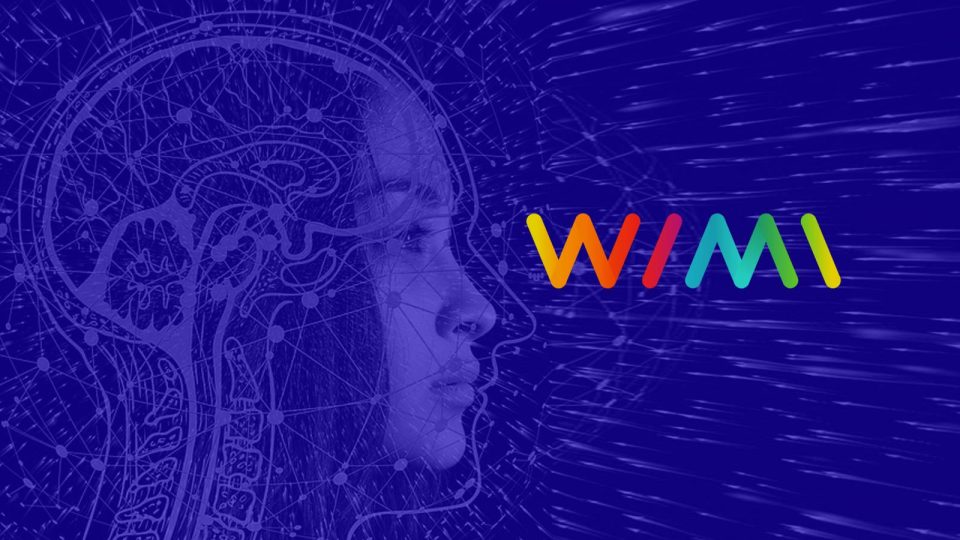WiMi Hologram Cloud a leading global Hologram Augmented Reality (“AR”) Technology provider announced that a compact, high-performance holographic computing system has been developed to accelerate CGH computation through FPGA technology. Our system combined a CGH computation engine with an embedded CPU to realize high-speed, real-time CGH computation, thus providing new possibilities for 3D holographic displays.
 CIO INFLUENCE News: Webscale Acquires Section.io to Launch CloudFlow
CIO INFLUENCE News: Webscale Acquires Section.io to Launch CloudFlow
Hardware: WiMi’s FPGA-based holographic computing system consists of two main components, namely the embedded CPU and the FPGA. The embedded CPU performs operating system tasks as well as auxiliary processing, such as point cloud rotation. It is also responsible for controlling the FPGA for CGH computation. This tightly integrated structure makes it possible for the system to realize high-speed CGH computation on a single chip, avoiding the waste of resources and decrease in efficiency caused by the use of hardware frequency dividers.
Field programmable gate array: In FPGA, we have implemented a CGH calculation circuit based on a recursive relation algorithm. This circuit receives the point cloud data from the embedded CPU and the parameters of the CGH, and then stores the point cloud in the block RAM, which is a memory block of the FPGA. The complex hologram is sent through a multiplexer (MUX) to the normalization unit (NU) where the real and imaginary parts are normalized separately. The computed phase holograms are stacked in FIFO mode and connected to the frame buffer to display the output, which is subsequently sent to the SLM.
The optical connection of the holographic computing system: Our system is tightly connected to the optical system, and the point cloud data is stored in a secure digital memory card and transferred to the dedicated circuitry of the FPGA via an embedded CPU. In the FPGA, holographic calculations are executed in real-time and the results are displayed on the SLM. For optical reconstruction, we use a phase modulation-based SLM and capture the output through an output lens to generate a 3D reconstructed image.
CIO INFLUENCE News: D-Wave Showcases Advantage QPU’s Ability to Improve Cellphone Network Transmission
WiMi’s FPGA-based holographic computing system is capable of real-time computation of ultra-high definition CGH for the most demanding 3D holographic displays. The system not only realizes high-resolution holograms, but also achieves breakthroughs in speed and performance. It pushes holographic technology to a whole new level. This technology will provide more possibilities for 3D displays in medical imaging, virtual reality, education, and other fields, as well as a broad prospect for future holographic technology.
WiMi’s FPGA-based holographic computing system works in tandem to achieve high-quality 3D image reconstruction through several key steps. First, point cloud data, which contains information about the 3D scene, is stored on a secure digital memory card. This data is read by the embedded CPU to provide input for subsequent computations. The accuracy and completeness of the point cloud data are critical to the quality of the hologram. Next, the point cloud data may need to be rotated or otherwise geometrically transformed to properly render the 3D scene in the hologram. These geometric transformations can be realized by dedicated circuits inside the FPGA, a hardware-programmable computing platform that efficiently handles these computational tasks and ensures that the point cloud data is correctly transformed during the computation process.
The real-time holographic computation process for FPGA involves complex operations, for example, converting point cloud data into phase holograms. The parallel computing capability and hardware-level performance advantages of FPGA ensure fast and efficient computation speeds, enabling the system to generate holograms in real-time. The generated phase hologram is sent to a SLM. The SLM is an optical device that creates a visible 3D image by modulating the phase of light. The hologram is dynamically displayed on the SLM, producing a realistic holographic effect. Optical reconstruction is the final step in WiMi’s FPGA-based holographic computing system. Optical reconstruction is achieved by using a camera to capture the optical display on the SLM. The camera records an optical representation of the hologram, producing a visible 3D image. This image can be presented to the viewer with high resolution and quality, providing excellent visualization.
WiMi’s FPGA-based holographic computing system has multiple implications and values. First, it can realize high-performance holographic computing and bring high-quality, real-time 3D image presentation. Second, the system is highly flexible and suitable for various application areas, such as medicine, virtual reality, education, etc. It can save energy and space. In addition, it saves energy and space, contributing to the development of portable holographic devices. Most importantly, this technology advances the development of holographic technology and opens up new possibilities for future 3D display technology. WiMi’s FPGA-based holographic computing system represents a milestone technology in the field of 3D image rendering and optical reconstruction. Its development will advance the application of holographic technology and bring more innovative 3D display experiences to a variety of fields, marking an important step in the advancement of technology.
[To share your insights with us, please write to sghosh@martechseries.com]


